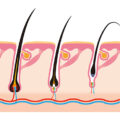Last updated on November 8, 2024
While it’s understandable that like many people, you may be hoping for a quick fix to regaining your crowning glory, the only way to permanently and naturally restore your hair is through proven natural and permanent hair transplantation.
Follicular unit transplantation (FUT) has been extensively tested over decades and in the right surgical hands the hair transplant patient can look forward to a healthy and natural looking hair transplant.
Outstanding undetectable results can be achieved with modern hair transplantation when an experienced hair restoration surgeon draws on a successful marriage of medicine, science and artistry.
However, leading hair restoration surgeon Dr Joshua Wee warns that discretion and caution should still be exercised when presented with claims that ‘state-of-the art techniques’ will deliver miracle results.
She is concerned about promotions suggesting that Follicular Unit Extraction (FUE) is superior to the more established follicular unit transplantation (FUT).
“Many physicians around the world have tried the FUE technique with markedly varying success.”
“And, a great deal of discussion by physicians, ancillary personnel and the general public has occurred on multiple media platforms about the value of FUE versus the conventional strip harvesting with FUT.”
“Sadly, many of the claims of the newer technique are related to marketing and self-promotion rather than a clear scientific evaluation.”
Dr Joshua Wee says while FUE can be appropriate for some people, it isn’t necessarily the best treatment for all hair loss patients. The only way of finding out the best treatment for a patient’s individual needs is through a consultation with an experienced hair transplant doctor. After all, the best outcome is a permanent, healthy and natural looking transplant.
Although advocates of FUE say it results in faster hair growth, no linear scar and a faster recovery phase, this outcome cannot be guaranteed for all patients.
“For example, patients with Ehlers Danlos syndrome, who because of alterations in collagen deposition, are prone to widened scars and poor wound healing, may end up with stretched circular scars after an FUE.”
“Hence, it is critical to have a thorough medical consultation with an experienced hair restoration surgeon before deciding on a surgical treatment.”
Dr Joshua Wee says performed with one or two assistants, as opposed to having a surgical support team of up to eight trained technicians for FUT, FUE involves extracting follicles with a small punch.
This is referred to as ‘blind harvesting’ because the small punch prevents the doctor from seeing the follicles. A consequence is lower quality control, a reduced survival rate of precious donor follicles and potentially, an inferior hair transplant.
For more professional advice about the proven hair loss treatment that is right for you call 1800 694 481 or fill out an online contact form.








